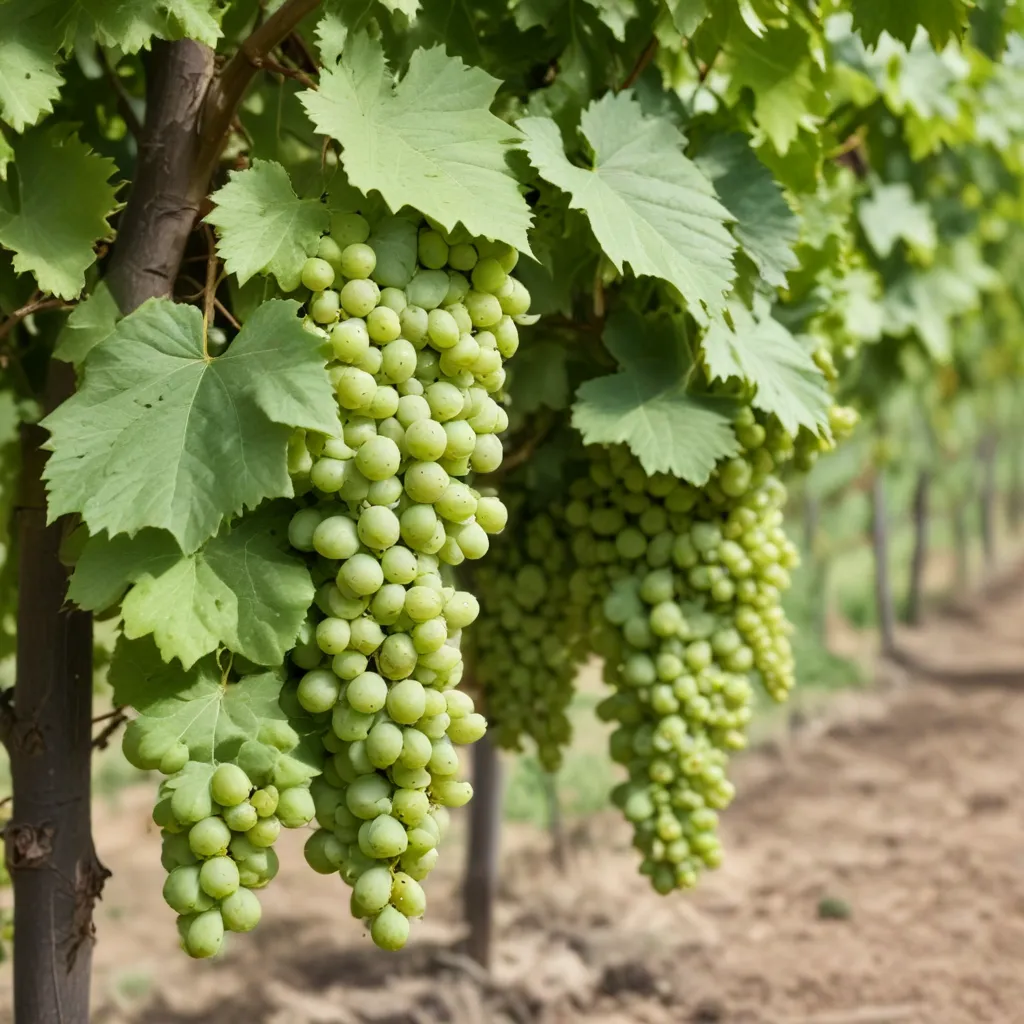
Foliar Starch Accumulation Precedes the Cascade of Grapevine Red Blotch Disease Symptoms
Grapevine red blotch disease (GRBD) is a significant challenge facing the global wine industry, as it compromises fruit quality and reduces vintner profits. At the heart of this disease lies the disruption of leaf carbon metabolism, leading to a cascade of physiological responses that ultimately impact berry ripening. Recent findings suggest that the initial manifestation of GRBD may be the accumulation of starch in the leaves, preceding the visible symptoms that growers have come to recognize.
Starch Metabolism in Grapevine Leaves
Leaves serve as the primary site of photosynthesis in grapevines, converting light energy, carbon dioxide, and water into carbohydrates that fuel plant growth and development. These carbohydrates can take the form of soluble sugars, like glucose and sucrose, or they can be stored as starch within the chloroplasts.
Starch synthesis occurs when photosynthesis produces more carbohydrates than the plant can immediately utilize or translocate to other organs. Starch-synthesizing enzymes, like ADP-glucose pyrophosphorylase, convert the excess soluble sugars into insoluble starch granules. Conversely, when the plant requires more carbon resources, starch-degrading enzymes, such as α-amylase and β-amylase, break down these granules back into soluble sugars for export and use.
Grapevine leaves exhibit a distinct diurnal pattern of starch accumulation and depletion. Starch levels tend to increase during the day as photosynthesis is active, reaching a maximum in the late afternoon. At night, starch is broken down and the resulting sugars are exported to support other plant processes. This dynamic cycling of starch is crucial for maintaining the balance between carbon assimilation and utilization within the leaf.
Factors Influencing Foliar Starch Accumulation
A variety of environmental, developmental, and genetic factors can influence the degree of starch accumulation in grapevine leaves. Abiotic stresses, such as drought, high light, or nutrient deficiencies, can disrupt the balance between photosynthesis and carbon export, leading to excess starch deposition. Certain grapevine cultivars may also be predisposed to higher starch levels due to differences in carbohydrate metabolism.
Furthermore, the developmental stage of the vine plays a significant role. Leaves tend to accumulate more starch as the season progresses, with the highest levels typically observed during the veraison and ripening stages. This is likely due to the increased carbon demands of the developing fruit, which can outpace the rates of translocation and utilization within the leaves.
Cascade of Grapevine Physiological Responses
The accumulation of starch in grapevine leaves infected with the grapevine red blotch virus (GRBV) appears to be the initial manifestation of GRBD. This excess starch disrupts the normal balance of carbon metabolism, triggering a cascade of downstream physiological responses.
Photosynthesis and Carbon Assimilation
The physical presence of starch granules within the chloroplasts can impair the structural and functional integrity of the photosynthetic apparatus. This, in turn, leads to a reduction in the leaf’s net carbon assimilation (Anet) and photosynthetic efficiency, as measured by parameters like quantum yield of PSII (ΦPSII) and electron transport rate (J).
The decreased Anet and impaired carbon export from infected leaves result in the accumulation of soluble sugars, which may trigger a feedback inhibition of photosynthesis. This end-product inhibition is a well-documented response in plants experiencing disruptions to their carbon balance.
Nutrient Mobilization and Transport
The reduced carbon export from GRBV-infected leaves can also impact the translocation of nutrients, such as nitrogen and potassium, from the leaves to the developing fruit. This disruption of the source-sink relationship may contribute to the delays in berry ripening and reduced fruit quality often observed in GRBD.
Additionally, the physical obstruction of the phloem vessels by starch accumulation or host defense responses, like callose deposition, may further impede the efficient transport of nutrients and carbohydrates throughout the vine.
Stress Responses and Adaptation
As a defense mechanism, GRBV-infected leaves may increase the synthesis of anthocyanins and other phenolic compounds. These pigments can serve as photoprotectants, shielding the photosynthetic apparatus from excess light energy when carbon assimilation is reduced.
However, the redirection of carbon resources toward the production of these secondary metabolites may come at the expense of primary metabolic processes, such as sugar accumulation in the berries. This trade-off between stress response and fruit quality is a hallmark of GRBD.
Regulation of the Starch-to-Cascade Pathway
The accumulation of starch in GRBV-infected leaves and the subsequent cascade of physiological responses are governed by complex signaling pathways and genetic mechanisms. Hormonal regulation, involving phytohormones like abscisic acid, ethylene, and auxin, plays a crucial role in coordinating the plant’s response to the viral infection.
At the molecular level, the expression of genes involved in starch biosynthesis and stress response pathways is likely altered in GRBV-infected vines. Understanding the specific genetic and epigenetic mechanisms underlying this cascade will be a crucial step in developing targeted management strategies for GRBD.
Implications for Grapevine Growth and Yield
The disruption of carbon metabolism and nutrient translocation in GRBV-infected vines can have significant consequences for both vegetative and reproductive development. Reduced leaf expansion and impaired shoot growth may limit the vine’s capacity to capture light energy and assimilate carbon, further exacerbating the physiological imbalance.
Furthermore, the delays in berry ripening and the reduction in sugar accumulation and anthocyanin synthesis can compromise the overall fruit quality, ultimately impacting the winemaking process and the vintner’s profitability. Understanding the cascade of physiological responses triggered by GRBV infection is essential for developing effective disease management strategies and maintaining the high-quality standards that consumers expect from the Wine Garden Inn’s estate-grown wines.
To learn more about our winemaking journey and the steps we take to ensure the quality of our wines, please visit www.winegardeninn.com. Our team of experts is dedicated to staying at the forefront of grapevine health research and implementing the latest findings to deliver an exceptional wine-tasting experience for our guests.
